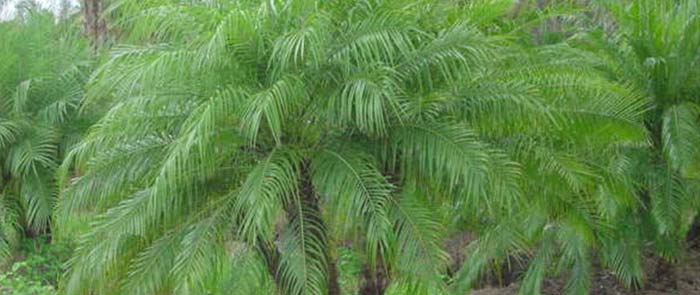Phoenix Roebelenii

The Phoenix Roebelenii is commonly known as the Pygmy Date Palm.
This slow-growing palm tree is very popular in Florida, but it originates in Southeast Asia. It will only reach about 10 feet tall, so it is a great palm for virtually any location.
You can find the Pygmy Date Palm at Palmco, along with more than 20 other varieties of palm trees. We use our 30 years of experience to grow healthy, beautiful palms that are beautiful in any construction or landscaping project.
Come visit our 600-acre palm tree paradise to see for yourself!
USDA Plant Hardiness Zones
Most avid gardeners, landscapers, and wholesale plant growers know about the usefulness of the USDA Plant Hardiness Zone Map. It can help your know which plants will thrive best in certain locations throughout the United States, including Hawaii and Alaska.
The map was created based on the average annual lowest temperature in the area.
Each zone has a 10-degree difference.
USDA zones are particularly useful when your project involves palm trees in northerly regions. Most palm trees do well in zones 10 and 11, but some can also grow in zones as far north as Zone 7.
Florida, for example, is a large state and contains all zones between 8a and 11a. Zone 7 can be found in locations further north, such as Tennessee, Kentucky, Missouri, and Kansas. There are even locations in Oregon, Washington and Canada where some palm trees varieties can thrive.
Palmco’s website has a handy description for each type of palm tree.
We include the zone where the variety will thrive, so you will know you are selecting an appropriate palm for the location of your project. This feature is extremely helpful for those who are doing large landscaping projects in a variety of locations throughout the United States.
Examples Of Palm Tree Zones
The Phoenix Roebelenii, or Pygmy Date Palm, does well in zones 10A to 11.
That means it prefers southern locations like Florida, Hawaii, and parts of California. Contrary to popular belief, however, palm trees can flourish in many other regions of the country!
This palm tree is commonly known as the Jelly Palm, because the fruit is often made into a sweet jelly. This tree will do well in zones 8A to 10B. That means that it cannot withstand some of the hottest temperatures in Florida, but it can go as far north as parts of Texas, Arkansas, Alabama, and even North Carolina.
The Ribbon Palm is well known for its distinctive trunk, which creates “ribbons” of bark. This slow- to moderate-growing plant is native to Australia. It does well in zones 9a to 11. You may find them in Louisiana, Northern Florida, or Texas.
This palm tree will reach 20 feet tall. It is highly salt-tolerant and highly drought-tolerant. It actually originates in southernmost Florida. That is perhaps why it does best in zones 10B to 11, which you will find only in Southern Florida, very few parts of California, and Hawaii.
If your project calls for a tropical touch, Phoenix Roebelenii may be a great choice, but there are many other options. Palmco can help you find a palm tree that will work in your specific location.
Call (239) 283-4594 to discuss your requirements with one of our palm tree experts.

